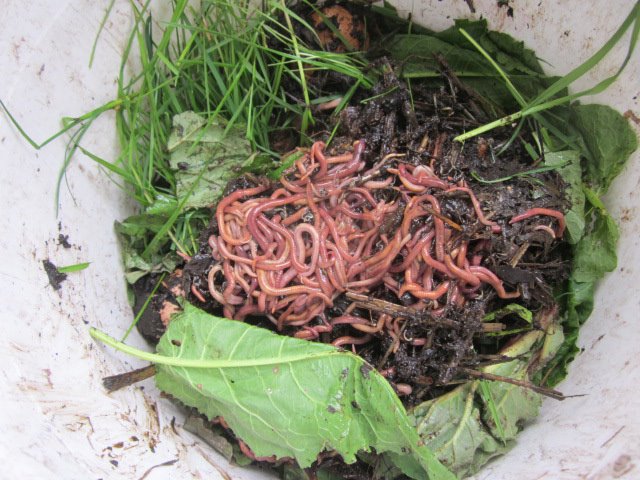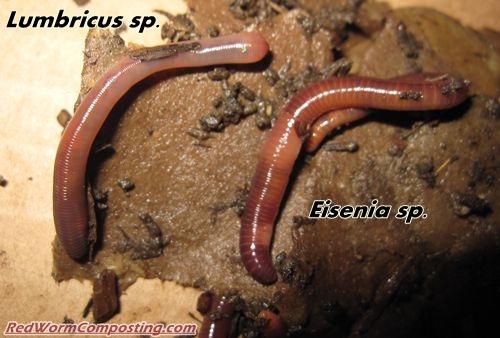The Ultimate Red Wiggler Composting Checklist for Successful Vermiculture
Wiki Article
Recognizing the Perks of Red Wiggler Composting: How This Reliable Technique Changes Organic Waste Into Nutrient-Rich Soil Modifications
Red Wiggler composting, utilizing the types Eisenia fetida, presents a compelling approach to natural waste monitoring, transforming kitchen area scraps and yard particles right into valuable soil changes. This approach not only improves dirt fertility but also addresses pressing environmental issues, consisting of garbage dump waste decrease and greenhouse gas discharges.What Are Red Wigglers?
Red wigglers, scientifically referred to as Eisenia fetida, are a varieties of earthworm that play a pivotal duty in vermicomposting systems. These worms are characterized by their reddish-brown color, segmented bodies, and a distinct ability to thrive in organic-rich atmospheres, making them ideal for composting applications - Red Wiggler Composting. Unlike their garden-dwelling counterparts, red wigglers like to populate the upper layers of soil, where decomposing matter is abundantTypically gauging in between 3 to 4 inches in length, red wigglers have a high reproductive rate, allowing them to multiply rapidly under optimum problems. They possess an one-of-a-kind digestive system that permits them to process organic waste successfully, transforming it into nutrient-rich spreadings, which are extremely valuable for plant growth.
Their tolerance to differing dampness levels and temperature level ranges even more improves their energy in vermicomposting setups, making them a preferred selection among composting fanatics. Furthermore, red wigglers are cardio organisms, which demands a well-aerated composting setting, making sure reliable disintegration. Comprehending the organic characteristics and actions of red wigglers is vital for optimizing their usage in lasting waste administration practices.

Advantages of Vermicomposting
Harnessing the power of vermicomposting offers a multitude of farming and environmental benefits. To start with, it considerably decreases natural waste in land fills, thus lessening methane emissions, a potent greenhouse gas. By drawing away food scraps and backyard waste to vermicomposting, we sustain a more sustainable waste management system.Additionally, vermicomposting improves dirt wellness. The spreadings created by red wigglers are rich in necessary nutrients, microorganisms, and enzymes, boosting dirt framework and fertility. This nutrient-rich amendment advertises durable plant development and boosts water retention, reducing the need for chemical fertilizers.
In addition, vermicomposting fosters biodiversity in the dirt ecological community. The intro of advantageous bacteria from worm castings aids in disease reductions and nutrient cycling, creating a much healthier setting for plants.
Economically, vermicomposting reduces the prices related to chemical inputs and garbage disposal. Farmers and gardeners can grow high-grade produce at lower costs, contributing to food safety and sustainability.
Exactly How to Start Composting
Starting a composting venture can be a uncomplicated and fulfilling procedure. To start, choose a suitable area that is well-drained and receives partial sunlight. This will certainly assist maintain a well balanced temperature, essential for the composting procedure. Next, select a garden compost container or produce an assigned area Related Site in your garden, guaranteeing it is quickly available for gathering and adding products compost.Collect natural materials such as cooking area scraps, yard waste, and shredded paper. Goal for a balanced mix of 'eco-friendly' materials, high in nitrogen (e.g., fruit scraps, coffee premises), and 'brown' products, rich in carbon (e.g., dried out fallen leaves, cardboard) A ratio of roughly 2:1 environment-friendly to brown products is perfect.
Beginning layering your materials, making certain sufficient air blood circulation by turning the stack frequently. This advertises aerobic decomposition, speeding up and reducing odors up the process. Screen wetness levels; the garden compost link needs to really feel like a moist sponge yet not overly wet.
Nutrient Profile of Vermicompost
Composting, particularly with red wigglers, generates a nutrient-rich product called vermicompost. This natural modification is distinguished by its high focus of essential nutrients, making it an indispensable source for horticulture and farming. Vermicompost typically includes raised degrees of macronutrients such as nitrogen, potassium, and phosphorus, which are important for plant development. In addition, it provides micronutrients like magnesium, iron, and calcium, cultivating durable plant growth and boosting dirt wellness.The microbial activity existing in vermicompost better improves its account, presenting valuable microorganisms and fungis that promote nutrient availability and uptake in plants. This organic element aids in reducing plant illness and enhancing soil you could try these out framework, bring about improved water retention and aeration.

Environmental Impact of Composting
The ecological effect of composting, particularly via the usage of red wigglers, is profound and diverse. This approach considerably decreases the quantity of organic waste sent to landfills, which in turn reduces greenhouse gas emissions, particularly methane-- a potent factor to climate adjustment. By drawing away organic materials from garbage dumps, red wiggler composting not just aids mitigate environmental destruction yet likewise advertises sustainable waste monitoring techniques.
Moreover, composting contributes to carbon sequestration, as the process captures carbon dioxide from the atmosphere and shops it in the dirt. This all-natural procedure aids in combating environment change while improving the dirt - Red Wiggler Composting. Overall, red wiggler composting presents a practical, green option for waste management and environmental sustainability, advertising much healthier environments and an extra sustainable future
Conclusion
In conclusion, Red Wiggler composting serves as an effective technique for transforming natural waste into beneficial soil amendments. The process not just boosts soil fertility and structure however additionally alleviates environmental concerns linked with waste disposal.Red Wiggler composting, utilizing the species Eisenia fetida, provides a compelling method to natural waste management, converting kitchen scraps and backyard debris right into important soil amendments. Unlike their garden-dwelling counterparts, red wigglers choose to populate the upper layers of dirt, where rotting issue is abundant.
The spreadings generated by red wigglers are rich in essential nutrients, germs, and enzymes, enhancing dirt framework and fertility. The nutrient-rich byproducts of red wiggler activity enhance soil framework, boost water retention, and advertise biodiversity within the soil environment.In conclusion, Red Wiggler composting offers as a reliable approach for transforming natural waste right into valuable soil amendments.
Report this wiki page